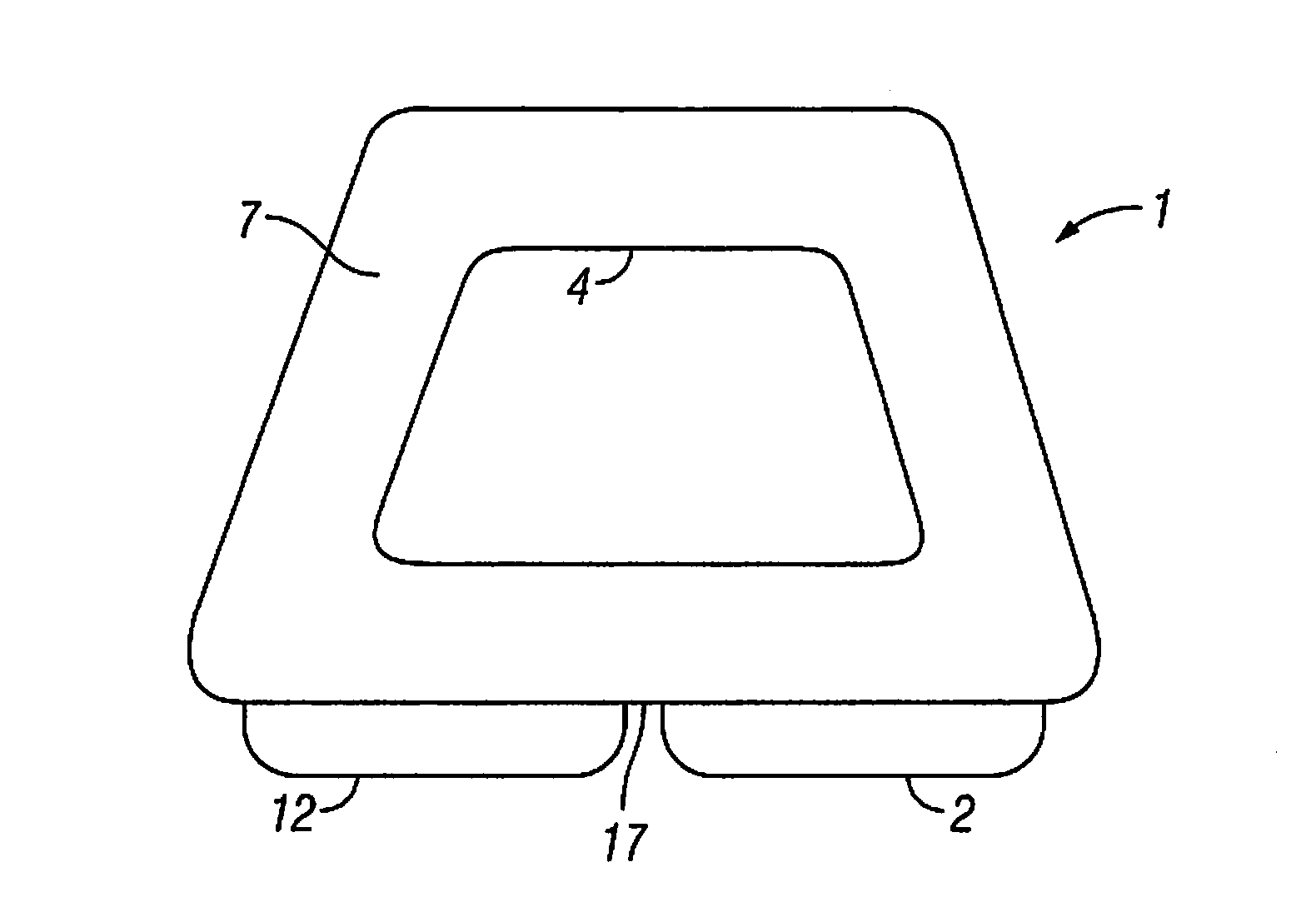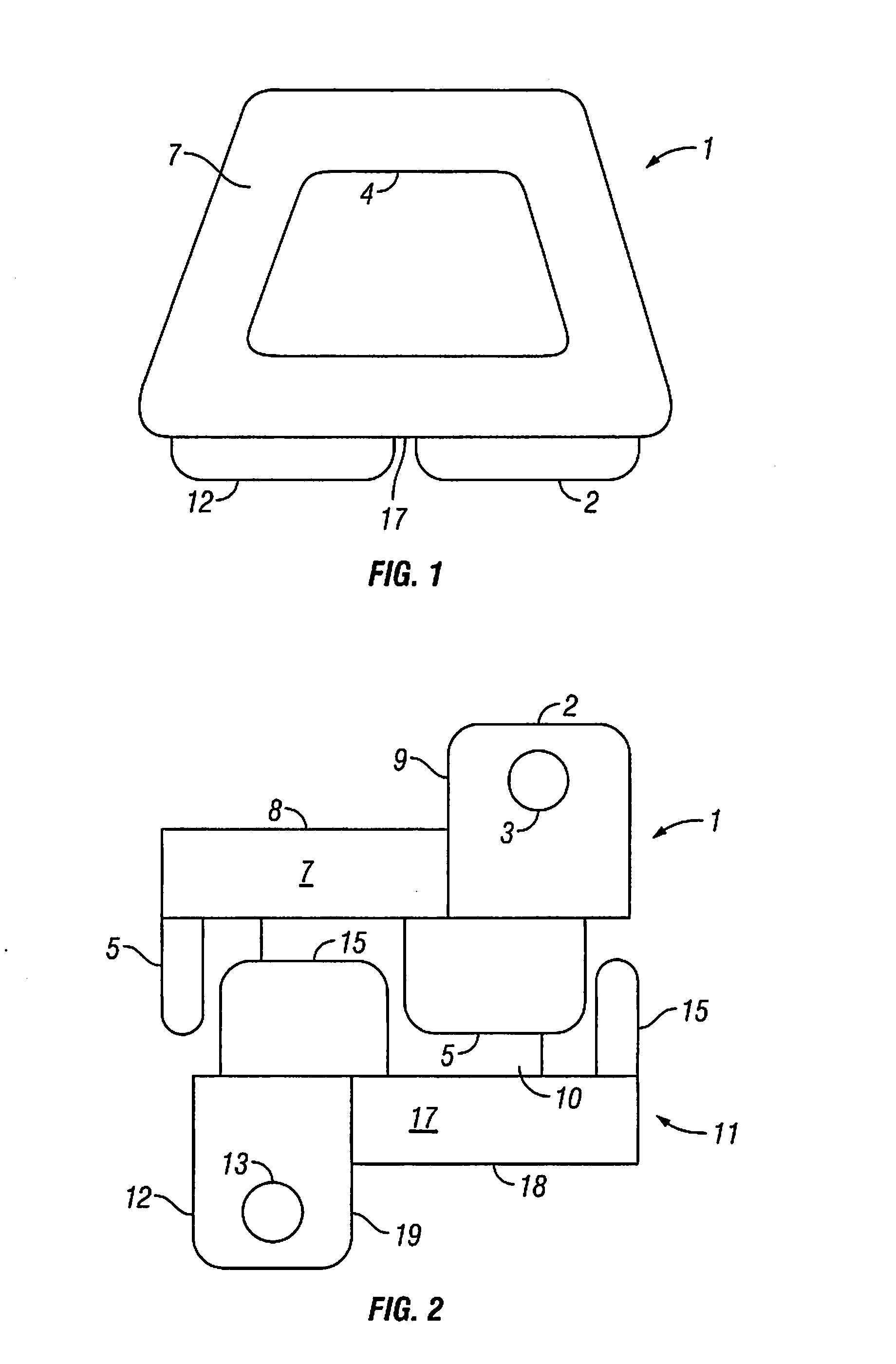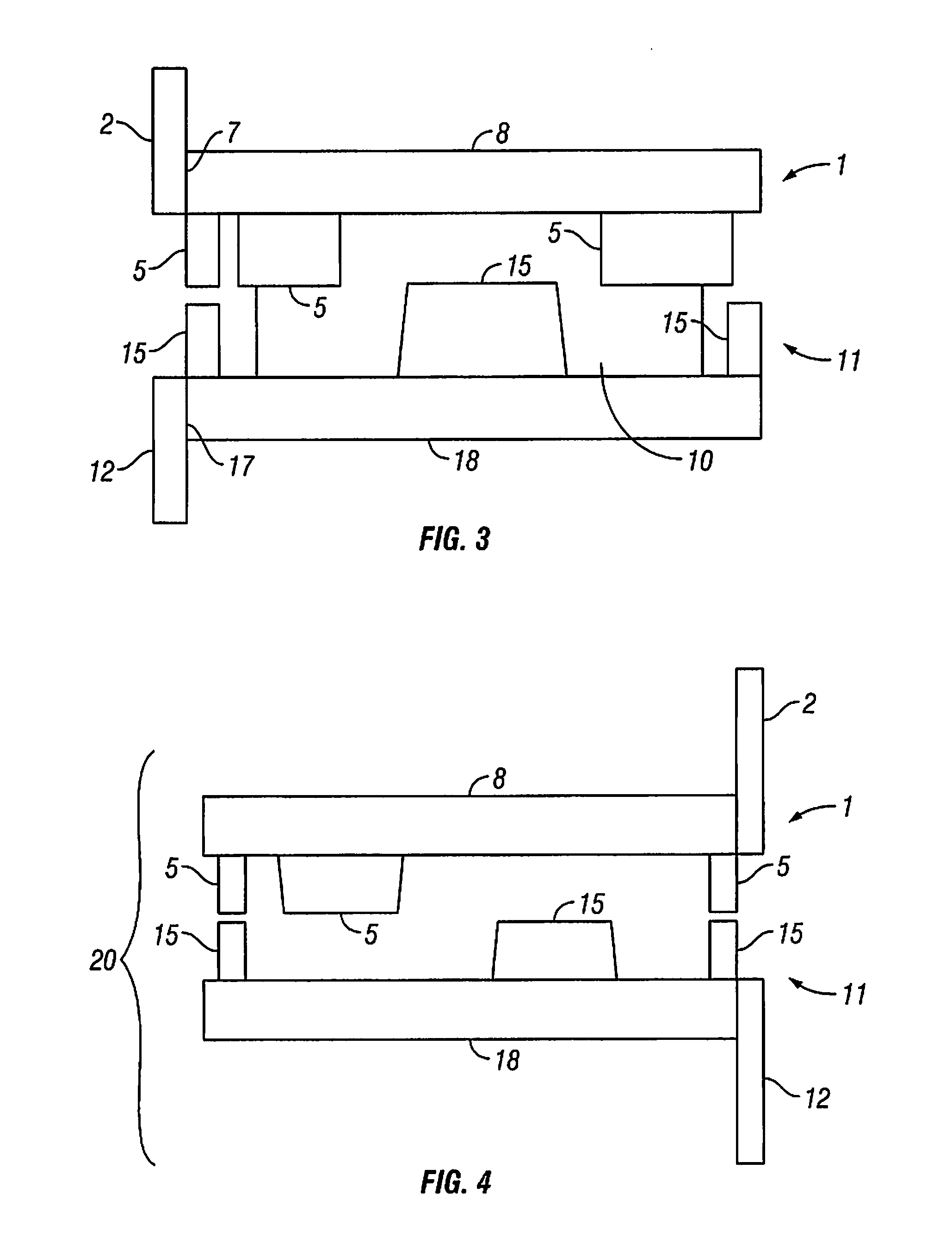Device for Stabilizing a Vertebral Joint and Method for Anterior Insertion Thereof
a technology for stabilizing devices and vertebrae joints, applied in the field of spinal prostheses and surgical methods, can solve the problems of accelerating degeneration of spinal segments, further injury to other components of the spine, irreversible procedures, etc., and achieves the effect of reducing wear
- Summary
- Abstract
- Description
- Claims
- Application Information
AI Technical Summary
Benefits of technology
Problems solved by technology
Method used
Image
Examples
Embodiment Construction
[0059]Referring now to the figures of the drawing in detail and first, particularly, to FIGS. 1-6 thereof, there is seen a device 20 for stabilizing a first bone of a joint relative to a second bone of a joint. In particular, the device 20 is useful for stabilizing a first vertebra relative to a second vertebra following discectomies or corpectomies. The device 20 includes a superior endplate 1 and inferior endplate 11. As shown in FIG. 15, the superior endplate 1 is configured to support a superior vertebra 101. The inferior endplate 11 is configured to support an inferior vertebra 111. In one embodiment, a superior surface 8 of the superior endplate 1 is textured to increase friction between the superior vertebra 101 and the superior endplate 1. Likewise, the inferior surface 18 of the inferior endplate 11 is textured. The textured surface can include teeth, ridges, and / or grooves. These protrusions extend from a bone engaging surface of the device and engage bone of the joint to ...
PUM
 Login to View More
Login to View More Abstract
Description
Claims
Application Information
 Login to View More
Login to View More - R&D
- Intellectual Property
- Life Sciences
- Materials
- Tech Scout
- Unparalleled Data Quality
- Higher Quality Content
- 60% Fewer Hallucinations
Browse by: Latest US Patents, China's latest patents, Technical Efficacy Thesaurus, Application Domain, Technology Topic, Popular Technical Reports.
© 2025 PatSnap. All rights reserved.Legal|Privacy policy|Modern Slavery Act Transparency Statement|Sitemap|About US| Contact US: help@patsnap.com



